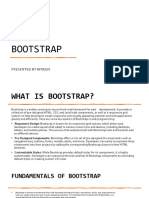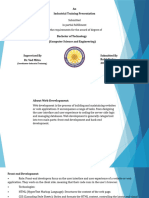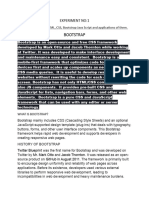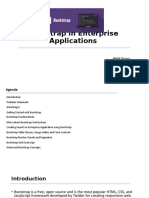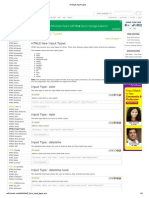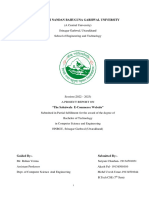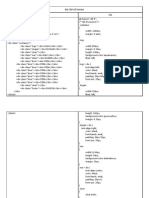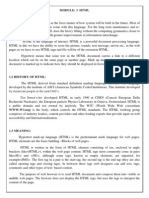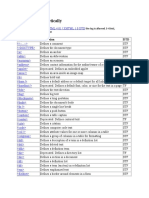0% found this document useful (0 votes)
91 views18 pagesHTML CSS Bootstrap Presentation
This document serves as a beginner's guide to web development, covering HTML, CSS, and Bootstrap. It introduces essential HTML tags, CSS styling, and the Bootstrap framework for creating responsive websites. Additionally, it explains the relationship between JavaScript and ECMAScript, highlighting JavaScript as an implementation of the ECMAScript standard.
Uploaded by
ChockalingamCopyright
© © All Rights Reserved
We take content rights seriously. If you suspect this is your content, claim it here.
Available Formats
Download as PPTX, PDF, TXT or read online on Scribd
0% found this document useful (0 votes)
91 views18 pagesHTML CSS Bootstrap Presentation
This document serves as a beginner's guide to web development, covering HTML, CSS, and Bootstrap. It introduces essential HTML tags, CSS styling, and the Bootstrap framework for creating responsive websites. Additionally, it explains the relationship between JavaScript and ECMAScript, highlighting JavaScript as an implementation of the ECMAScript standard.
Uploaded by
ChockalingamCopyright
© © All Rights Reserved
We take content rights seriously. If you suspect this is your content, claim it here.
Available Formats
Download as PPTX, PDF, TXT or read online on Scribd
/ 18




















